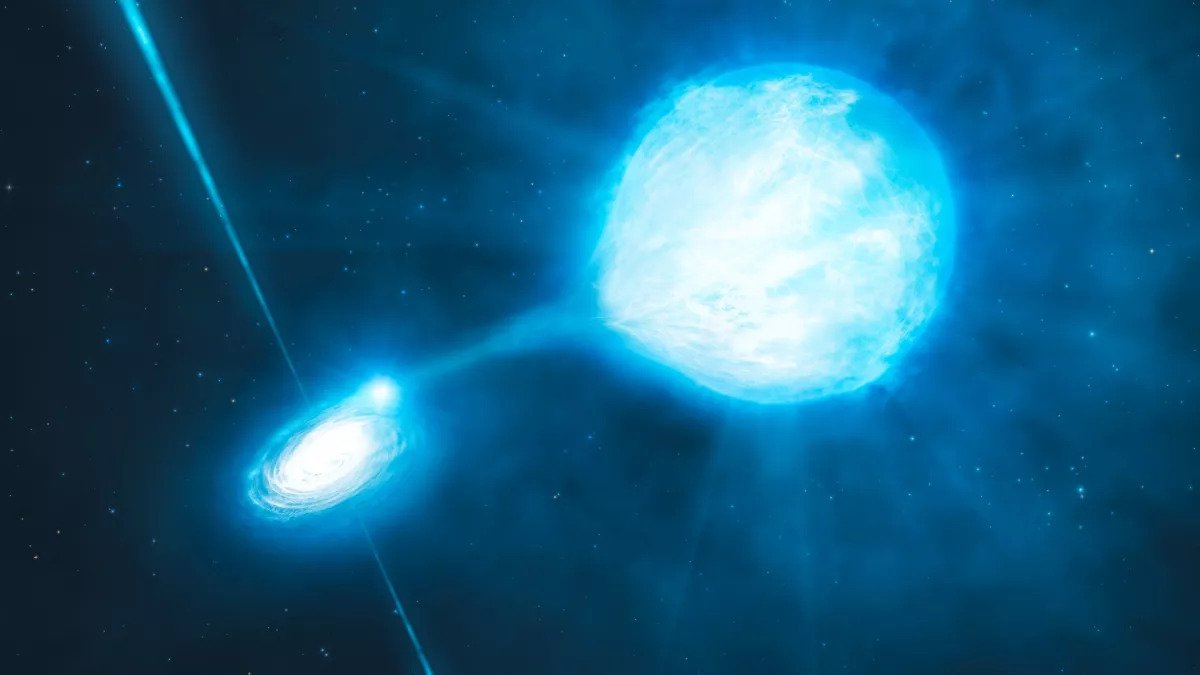X-ray binary stars are a pair of massive luminaries in which one of the components has turned into a black hole or neutron star. Scientists have found that they are born on the edges of star clusters and galactic arms.

X-ray binary stars
Scientists from the University of Paris-Cité and the Argentine Radio Astronomy Institute investigated the formation and evolution of pairs of massive stars. Over time, one of them explodes as a supernova and objects known as X-ray binary stars are formed.
Based on the models of stellar evolution, a more massive star from a pair always turns into a supernova. As a result of the explosion, it loses a significant part of its mass, which is why the remainder may be lighter than the surviving star.
This remnant may be a neutron star or a black hole. The companion constantly drops part of its mass on it, and this leads to the emission of X-rays, which gave the name to these systems.
Where do massive binary stars form?
Scientists have studied 26 X-ray binary stars. The lifetime of such massive luminaries is only a few tens of millions of years. Therefore, almost all of them should be located in the regions of the galaxy where they were originally born. And by extrapolating the movement of these systems back in time, you can find out the specific point where they formed.
The study showed that almost all X-ray binary stars are located near the galactic plane. And they were formed either in star clusters or on the edges of the arms of galaxies. And this is in good agreement with observations about where black holes are born. However, some of these systems are still not where they were born.
The fact is that when one of the two massive stars of the system turns into a supernova, the explosion is uneven. A significant part of the ejected mass flies away in a certain random direction, and the system itself, according to the law of conservation of momentum, accelerates in the opposite direction.
According to www.space.com
Follow us on Twitter to get the most interesting space news in time
https://twitter.com/ust_magazine
